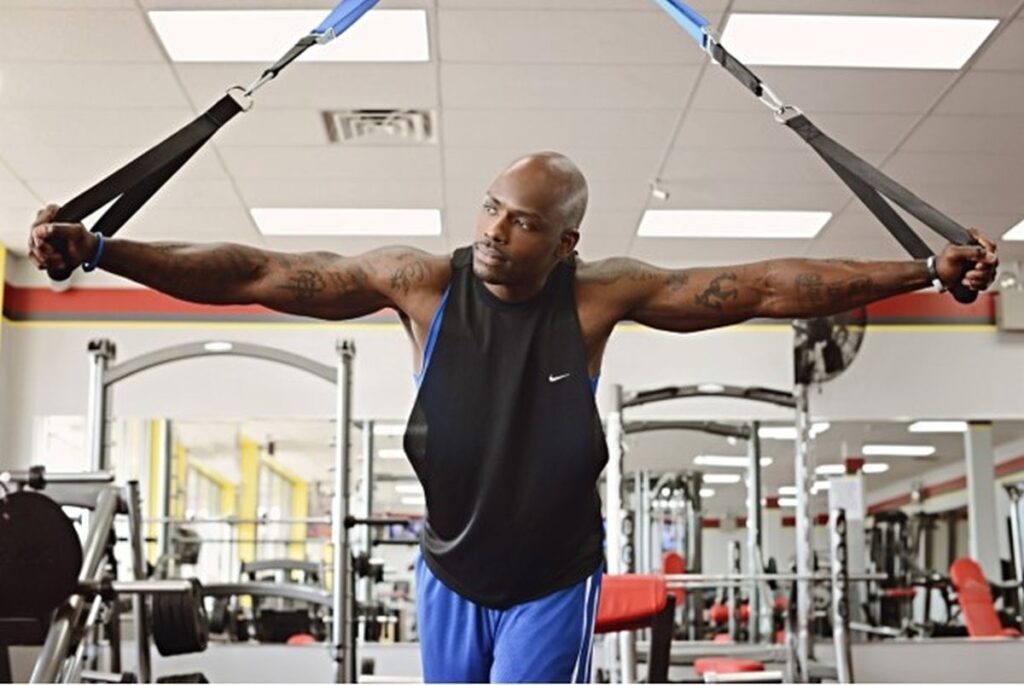Asking questions during your consultation with new personal training clients has several beneficial effects. First, their responses shed light on that possible client. You will learn what they anticipate from the workout plan and you as a personal trainer. Additionally, you’ll better understand what approaches are most likely to keep them inspired and motivated.
Two, during the initial meeting, asking questions is a chance to build rapport. It conveys to the potential customer your concern and desire for their success. Their trust in you rises as your interaction with them grows. Additionally, it pushes people to be open and honest about what is and isn’t working.
There are several ways to increase the number of personal training clients, but sales are at the core of every one of these methods. For some, the boogeyman of sales is just a delicate combination of having a fantastic product or service that people want or want to talk about and knowing fundamental human psychology.
When you prospect a client, your questions might influence what they say and how they feel. To better understand their motives and aspirations and eventually close more sales, you will have more power and information when you ask more closing questions. Keep in mind that utilizing emotion to sell is an effective tactic.
Before deciding whether a potential client will benefit from your services, personal trainers must learn as much as they can about them. But far too frequently, personal trainers need to be aware of the appropriate inquiries to understand a potential client truly.
Essential Questions To Ask

What Is Your Workout Objective?
Even if you have the best personal training certification in the world, good luck starting a profitable fitness business if you need help to assist clients in reaching their objectives. You can tell what they intend to achieve by their inquiry. It provides information about the outcomes they anticipate from their training.
Perhaps they want to climb the stairs without gasping for air. Or they want to reduce their body fat to feel more self-assured when they walk into a place. Your training will be considered a success in their eyes if you get this outcome.
You can determine if they have attainable goals based on their response to this query. If they don’t, it’s time to adjust their expectations. Inform them of what to anticipate to prevent disappointment.
Why Do You Value Achieving This Goal?

Once you know their objectives, find out why they have them. What makes individuals want to start an exercise regimen or alter their body composition?
Without a compelling reason, they can be tempted to give up before they achieve their goals. Additionally, as a personal trainer, you may use their way to spur them on as they go. Remind them of the benefits of their strenuous exercise. Please encourage them to picture themselves getting closer to their objective.
What Kind Of Physical Activity Do You Engage In Regularly, If Any?
Will they only participate in your instruction once a week? What other regular exercise do they get if not that? They might play a few rounds of golf each month or play 3-on-3 basketball weekly with their friends.
It will be easier for you to choose what degree of intensity to start with if you have an idea of how active they are. It also reveals potential areas to concentrate on when developing their training program. For example, if they play golf frequently, developing more muscular upper body and core muscles can assist them power their swing.
You should avoid overusing or overtraining particular muscle groups if you are more aware of their weekly activity. It reveals where their workout should focus on having a more varied regimen.
What Kind of Workout Do You Like?

Asking clients to undertake workouts they enjoy is a practical fitness trainer tip. Because of this, it seems less like a workout and more like an enjoyable activity that happens to take place at the gym.
If the client claims they dislike all forms of exercise, what happens? Ask them whether any of the activities on a list—such as a kickboxing, walking, or spinning—might interest them. They should keep attempting various things until they discover something they enjoy.
Let them know that finding activities they enjoy doing is a bit of a trial-and-error process and that you’re prepared to walk with them until they do. Tell them that this is the first step in getting them to enjoy fitness.
What are Your Thoughts on Working Out in a Gym?
When they consider working out in a gym, some people experience anxiety. They worry that people in better physical condition will judge them. Or they worry that they’ll look foolish if they don’t know how to use a particular piece of equipment.
Even better would be to introduce them to some of your other customers or acquaintances from the gym. When they walk in the door, it can sometimes be enough to calm them down to see a familiar face.
Do You Currently Have Medical Attention?

Health conditions should already be covered in your intake questionnaire. However, if a possible problem is under control, clients must remember to mention it. One illustration is blood pressure.
Identify problems you should be aware of when creating a personal training program. You can find out if they visit a doctor frequently for anything other than their annual physical.
A client’s medical history and current state of health should be ascertained before you schedule your first workout with them. Even though it could seem like you are interfering in the client’s private life, specific medical issues can prevent a person from engaging in any physical activity. While designing the client’s workout regimen, you might need to make some adjustments due to specific medical issues.
Additionally, in some instances, you might not have the necessary tools or expertise to train customers with specific medical issues, such as diabetes or heart disease, necessitating a fitness professional specializing in these conditions. You will direct them to trainers who possess the knowledge to accomplish this.
How Much Time Can You Commit To A Personal Training Session?
Personal trainers must balance a client’s goals and the effort they are prepared to put in. One weekly 30-minute training session will only result in significant changes, especially if you can exercise independently between sessions. However, you can spend some days working out.
Your trainer can help you find ways to meet daily activity goals if you’re realistic about your schedule. On days when your schedule is busy, they might offer you quick 10-minute workouts to complete at home or work.
What Do You Usually Consume in a Day?

As the saying goes, a terrible diet cannot be overcome by exercise. Even if you specialize in fitness, diet affects a client’s capacity to achieve their objectives. This query provides an opportunity to offer guidance that supports the client’s exercise program. Discuss how their diet impacts both their feelings and their results.
You might advise the customer to consult a nutritionist or dietitian if they are having trouble with their diet. Inform them that nutrition affects their body’s ability to function and energy level throughout the day. Remind them that making modest adjustments to their food plan can frequently provide excellent effects.
It is your responsibility as a fitness trainer to help each client choose the proper diet for them, whether it be a Keto, Paleo, high-carb, or low-carb diet. To do this, you must first assess your client’s eating patterns because only then can you design a diet plan specific to their requirements and the first goals they set.
What Is Your Routine Or Schedule?
While it might seem foolish to ask, sleep can significantly impact your ability to achieve fitness goals. For optimal performance and to give their bodies time to heal and rebuild, a healthy adult needs between 7 and 9 hours of sleep per night.
To determine the methods and tactics to improve a client’s sleep, you must be aware of their sleeping patterns. Remember that no amount of alcohol, caffeine, or technology can compare to the advantages of a natural sleep and rest cycle for our bodies.
Are You Pleased With How You Appear When You Stand In Front Of A Mirror?

If asked this question, a person considering personal training is likely to acknowledge they don’t feel fantastic about their appearance. They may focus on their concerns, such as cellulite on their legs, or wish to drop 25 pounds altogether.
Your objective is to ask follow-up questions based on their response to encourage them to think critically and constructively about how you might assist in changing their physical condition.
Their emotional state or feelings about themselves should improve when they gaze in the mirror. These techniques engage them emotionally and use them as a talking point to reassure them that they can change with your assistance.
Conclusion
Several of these topics may already be covered in your personal training client questionnaire. However, asking these questions directly instead of just having them on your questionnaire form can result in a complete response.
A basic level of information can be found on personal training forms. But they need the client’s capacity to go further into a particular subject. Additionally, they need more back-and-forth dialogue that builds rapport. Therefore, using forms is a good idea, but they should serve more as a springboard than a destination.
